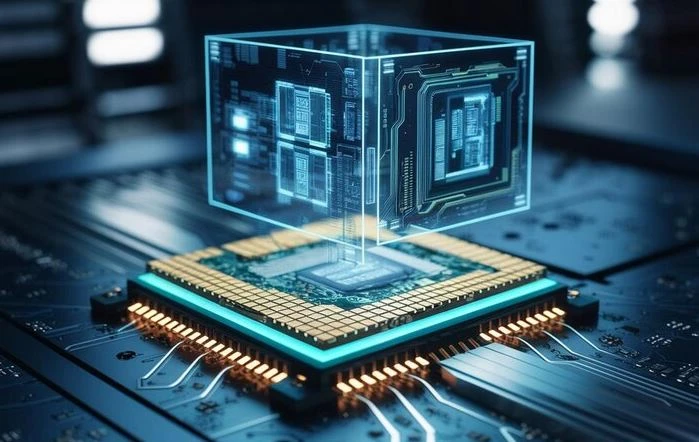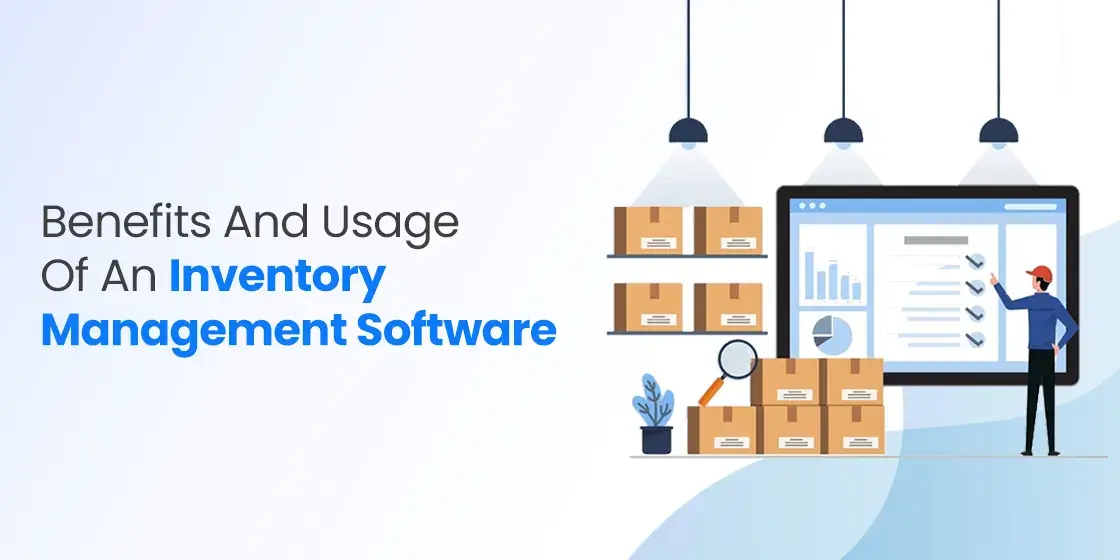Table of Content
Take a Look a the Complete Embedded Software Development Process Below
Embedded software are used in different types of machines to automate their core functions. The development of an embedded software is quite different from a conventional software. Basically, it requires a good understanding of both hardware and software technologies. Those who are well versed in both of these areas, can work on embedded software development effectively. Unfortunately, many individuals do not have enough understanding of hardware, hence they rely on taking custom software development services from reputed agencies to build embedded systems.
The application of embedded software can be found in every machine we use in our routine lives. From microwaves to air-conditioning systems, embedded software are used in every machine that requires automation. It is certainly not a new thing, as embedded systems were introduced in the market roughly around 30 years ago. Since then, these software have improved a lot with the help of new emerging technologies. Many renowned companies like Intel, Ni-X and others have also played a key role in spurring up the sector of embedded software development, making it a highly demandable job in the tech market.
If you also want to develop embedded systems for electronic machines, you need to learn the basics of embedded software development first. This article will give you a brief overview embedded systems, letting you know how they are developed using different types of advanced technologies. Let’s start from the basics understanding what is an embedded system and why it is needed in an electronic machine.
What is an Embedded Software?

Embedded software serves as the unseen orchestrator behind the seamless operation of countless devices we rely on every day. Unlike the applications we interact with on our computers or smartphones, it operates without a graphical interface or user input, yet its presence is indispensable. This specialized software runs deep within the hardware of devices, controlling their core functions and enabling them to perform their intended tasks efficiently and reliably.
Its role extends across an incredible range of technologies, powering everything from simple household appliances to sophisticated industrial machinery. For instance, in a microwave, embedded software regulates heating cycles, adjusting time and power levels automatically. In more complex systems, like those found in automotive electronics or modern medical devices, it manages intricate processes that require precision and real-time performance, all without human intervention.
What makes embedded software so critical is its ability to seamlessly integrate with hardware, operating with minimal resources while ensuring that devices function autonomously. It is the brain of systems that we often take for granted, such as traffic lights, wearable fitness trackers, or high-tech medical scanners, allowing them to deliver consistent, reliable performance. Although invisible to users, embedded software is the driving force that makes modern life easier, safer, and more efficient.
Importance of Embedded Software in Electronics Industry

The demand for embedded software is rapidly growing in today’s market, driven by its essential role in powering a vast array of electronic devices and systems that are deeply integrated into our everyday lives. As technology advances, more and more products require embedded software to function, making it a critical component of the modern digital landscape. This specialized software operates behind the scenes in countless devices, from household appliances to advanced industrial machinery, ensuring they work efficiently and effectively.
One of the primary reasons for this increasing demand is the widespread use of smart technology. As per the current tech trends in UAE, embedded software powers devices like smartphones, smart home appliances, and wearable tech, enabling them to deliver seamless user experiences with enhanced functionality. Whether it’s a refrigerator that tracks food inventory, a smartwatch that monitors health metrics, or a home security system that automates surveillance, embedded software is at the heart of these innovations, making daily tasks more convenient and connected.
In addition to consumer electronics, industries such as automotive and healthcare are also driving the demand for embedded software. Modern vehicles rely heavily on embedded systems for everything from engine control to entertainment and navigation systems. Likewise, medical devices like diagnostic scanners, and wearable health monitors depend on embedded software for precise and reliable operation. As these industries continue to evolve, the need for advanced embedded software grows, making it a crucial area of focus for companies seeking to remain competitive in the market.
Key Components of an Embedded System

An embedded system consists of three main components i.e. hardware, software and operating system. It can be termed as a three layer system that forms a strong collaboration with each other. To understand each component better, here is a quick explanation given below.
Hardware
The architecture of hardware components in an embedded system typically revolves around a central processing unit (CPU) or microcontroller,. This CPU is often specialized for low-power and high-efficiency performance to meet the specific requirements of embedded applications. The microcontroller typically includes integrated memory units such as RAM (for temporary data storage), ROM or flash memory (for permanent storage of program code), and often non-volatile memory for storing configuration data.
Interfacing with the external environment is a key feature of embedded systems. Input/output (I/O) ports enable the system to collect data from sensors and control actuators or displays. For real-time performance, embedded systems often incorporate hardware interrupt controllers and direct memory access (DMA) to handle data transfer and processing efficiently without overburdening the CPU. Additionally, power management modules are crucial for managing power consumption in battery-operated devices.
Partner with our software development specialists to pioneer custom solutions that drive your business forward.
Request Your Solution
Software
Machine coding in an embedded software system refers to programming at the lowest level where instructions are written in binary or hexadecimal format. The machine code consists of a series of binary instructions, each specifying a particular operation (like addition, subtraction, data movement, or control flow) to be executed by the processor. These instructions are executed sequentially by the CPU and are encoded in a format that the processor’s instruction set architecture (ISA) can interpret.
In an embedded system, machine code plays a crucial role because these systems often have strict performance and resource constraints. Direct control over the hardware through machine coding allows developers to optimize system performance, memory usage, and power efficiency. The machine code is typically stored in non-volatile memory, like ROM or flash, allowing the embedded system to execute the program on startup.
Operating System
A real-time operating system (RTOS) in an embedded software system is designed to manage hardware resources and execute tasks with precise timing and predictability. The core function of an RTOS is to schedule tasks based on their priority and timing constraints, ensuring that critical tasks are completed within defined time limits, known as deadlines. The RTOS uses task scheduling algorithms such as preemptive scheduling, round-robin, or priority-based scheduling to determine the order in which tasks are executed.
An RTOS also includes mechanisms for task synchronization, and resource management. Semaphores, and message queues are commonly used to coordinate tasks that need to share resources. This ensures that the system remains responsive and stable, even when multiple tasks are running concurrently. Additionally, an RTOS often incorporates interrupt handling, allowing the system to quickly respond to external events by temporarily suspending the current task and executing an interrupt service routine (ISR).
Embedded Software Development: Key Tips to Follow

Developing an embedded software is not easy because it requires in-depth understanding of the hardware for which the software is required. It can be done by following a step-by-step approach to build each component of the software in a systematic manner. Let’s take a look at these steps below.
Start with Analysis
Just like mobile app development, conducting thorough market research is a fundamental step in the development of an embedded software product, ensuring that the final solution aligns with the needs and expectations of the target audience. This process begins by carefully defining the target market, which involves identifying the industries, user groups, and geographical regions that are most likely to benefit from the product. Understanding the characteristics of this market segment is essential to tailor the product to their specific needs.
Once the target market is defined, a deeper exploration into its specific requirements is necessary. This phase involves evaluating the pain points, challenges, and unmet needs that currently exist within the industry. It may require conducting surveys, interviews, and focus groups with potential users, industry experts, and key stakeholders to gain detailed insights. This also involves understanding the performance expectations, integration needs with existing hardware or systems, and any industry standards or regulations that may affect product design.
Pick a Hardware Platform
Selecting the right hardware platform is a critical decision in the development of embedded software, as it directly influences the system’s performance, and ability to meet project requirements. The choice of hardware involves evaluating several key factors, including the processing power of the microcontroller, which must be sufficient enough to handle the software’s computational demands. Memory capacity is another crucial consideration, as both RAM and storage need to support the software’s data processing and storage requirements.
Beyond the technical specifications, the hardware platform’s power consumption is a vital aspect, particularly for embedded systems that function in energy-constrained settings like battery-powered devices or remote applications. Power efficiency impacts not only the system’s operational lifespan but also its reliability and suitability for different use cases. Developers must weigh the trade-offs between processing speed and energy efficiency to strike a balance that optimizes both performance and power usage.
Build the Software
Embedded software development is centered around the complex and critical task of designing the firmware, which acts as the essential bridge between the hardware and the software. This process involves writing low-level code that directly controls the hardware components, ensuring that the system functions as intended in its specific application. To accomplish this, developers often rely on widely used coding languages such as C, C++, and sometimes Python, each chosen based on its suitability for the task at hand.
The selection of a programming language is a strategic decision that directly impacts the system’s ability to fully utilize the hardware’s features and execute specific algorithms required by the application. The chosen language must enable precise implementation of custom algorithms, tailored to handle the unique tasks that the embedded system is designed to perform. Additionally, the language should also offer compatibility with the development tools, and hardware interfaces, ensuring smooth integration and testing throughout the development lifecycle.
Perform System Testing
Finally, conducting thorough testing and debugging is crucial to assessing the overall performance and reliability of the application. This phase plays a vital role in ensuring the software meets its intended functionality, identifies any hidden bugs, and verifies that the system behaves as expected under various conditions. Regardless of the type of software being developed—whether it’s a mobile app, web application, or embedded system—this process is essential for delivering a high-quality, error-free product.
In all types of software development, testing and debugging should be approached with a structured methodology. The choice of testing frameworks, tools, and techniques can vary based on the application’s architecture and requirements, but it must be implemented as a final step before deployment. This may include functional testing, performance testing, user acceptance testing (UAT), and others. By dedicating time and resources to this phase, developers can validate that the application meets its goals, and remains free of critical errors.
Types of Embedded Software Development Tools

There are different types of embedded software development tools used in the market. Being a developer, you need to know about these tools, as they come handy in different stages of application development. Here are some of them defined below.
Editor
The first essential tool for developing an embedded system is a text editor, which allows you to write and edit source code in programming languages like C and C++. This tool enables you to create, modify, and save code in plain text files, serving as the foundation for further development and compilation.
Compiler
Source code is typically written in a high-level programming language, which is easier for humans to read and write. To make this code executable by a machine, a compiler is used to convert it into low-level machine language, translating the instructions into a format that the hardware can process easily.
Assembler
This tool’s primary function is to translate human-written code into machine language. Unlike a compiler, which directly converts high-level code into machine language, an assembler first translates the source code into intermediate object code.
Debugger
This tool is essential for effective software testing, as it systematically analyzes the code to detect and remove bugs and errors. Debuggers not only identify where issues occur but also provide detailed notifications, pinpointing the exact lines or sections of code where the problems exist.
Emulator
An emulator is a software-based replication of the target system, designed to mimic the exact functionality and components of the hardware it represents. This tool is essential for simulating how the software will perform, allowing developers to test and observe how the code will behave in a real-time environment.
Embedded Software Examples
A simple calculator is a classic example of embedded software, as it performs a specific, dedicated function using minimal hardware resources. The calculator’s embedded software is programmed to handle mathematical operations such as addition, subtraction, multiplication, and division, all of which are processed by a microcontroller.
Similarly, an AC remote control is another example of embedded software at work. The embedded software inside the remote allows it to send specific signals, such as temperature settings, fan speed adjustments, and mode changes, to the air conditioner via infrared communication. This is yet another a fine example how embedded software works to control different types of devices.
Frequently Asked Questions
| What is an embedded software system? An embedded software system is specialized software designed to perform specific tasks within a larger hardware system. It operates on microcontrollers or processors to control devices, providing functionality tailored to the device’s purpose. |
| Why there is an increasing demand of embedded software in the market? Embedded software is in high demand due to its widespread application in various digital devices. From photocopiers to medical scanners, these systems power a range of equipment used extensively across industries by a large number of people. |
| What type of technologies are used for embedded software development? To create an embedded software product, developers utilize a variety of technologies. This process involves tools such as integrated development environments (IDEs), cross-compilers, debuggers, and several other essential resources. |
Final Words
That sums up our entire article in which we have discussed about embedded software development in detail. The demand of embedded software is certainly becoming high in the market, as more and more companies are looking to build advanced machines integrated with internal software. Keeping this in view, you should know how these systems work, and what type of technologies they generally use. This blog has discussed plenty of things related to embedded software, so that you can get a clear idea how this software is built and deployed in different types of machines.

Empower your digital journey with StruqtIO - Your dedicated partner for cutting-edge custom software development, innovation, and digital transformative solutions. Harness the power of technology to elevate your business and redefine your digital landscape today.


